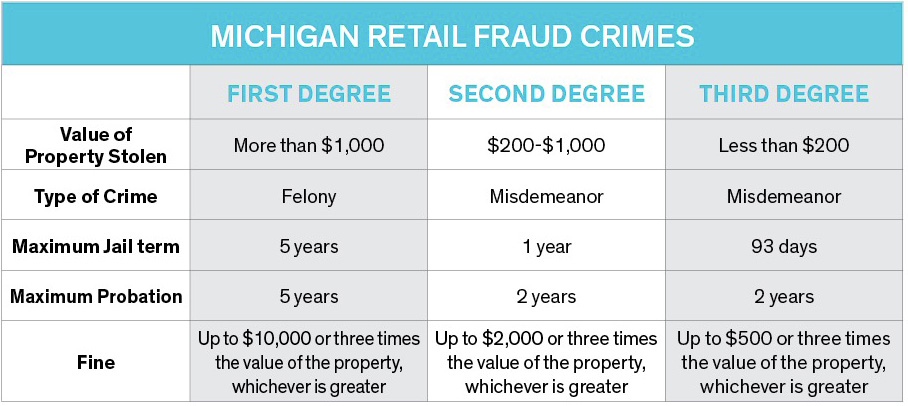
Perhaps the most famous shoplifting incident occurred when an 8-year-old boy, who was left home alone while his family traveled to Paris for Christmas, stole a toothbrush that wasn’t clearly approved by the American Dental Association. After a completely plausible getaway that included an epic ice rink slide, he realized he was a criminal.
Most shoplifters aren’t well-intentioned 8-year-olds that merely yearn for good dental hygiene. Instead, shoplifters usually fit into one of the following categories: (1) Opportunistic; (2) Desperate; or (3) Organized.
Opportunistic shoplifters take advantage of the situation and give in to the temptation to get something for nothing. These shoplifters might be teens trying to impress their friends or amateurs that steal an item for personal use. Desperate shoplifters may be alcoholics, drug users or vagrants. A desperate shoplifter usually steals to support a habit and might take items brazenly. Organized thieves are the most concerning. Professionals steal items with the intent to resell the goods to boosters, furthering other types of crime. These criminals are likely to resist arrest and will use all sorts of means to thwart detection.
Shoplifting is one of the most prevalent crimes in the United States. According to the National Association for Shoplifting Prevention, 550,000 incidents occur each day, amounting to $35 million in losses, or $13 billion annually. Almost more concerning is that shoplifters are only caught once in the 49 times they steal.
In Michigan, shoplifters may be charged with retail fraud in the first, second, or third degree. In addition, criminals that steal merchandise with the intent to resell it may be charged with organized retail crime, a five-year felony. The chart below provides a brief summary on the different types of retail fraud, though other elements, such as previous convictions, may elevate the charge.
Recently, I had the opportunity to visit with a group of retail owners from downtown Howell to discuss loss prevention. Of course, typical deterrents such as video surveillance, locking up high-ticket items, and maintaining clear sight lines are among the primary methods for security. However, while there is no silver bullet to shoplifting prevention, the business owners have come up with some great ideas on how to limit theft:
- Requiring that teens leave book bags at the front door. The policy has the added benefit of minimizing shoplifting while also preventing merchandise from being knocked off shelves.
- “Over customer servicing” loitering guests. Retailers found that by providing extra customer service to guests that were just “hanging out,” they could help those guests move on.
- Setting up a stroller parking area outside the store entrance.
- Working with local law enforcement to post photos online to identify shoplifters.

If you have questions about shoplifting prevention or outside-the-box tips on what’s working for you, email me at whallan@retailers.com.
William J. Hallan is MRA’s Executive Vice President, COO and General Counsel.
